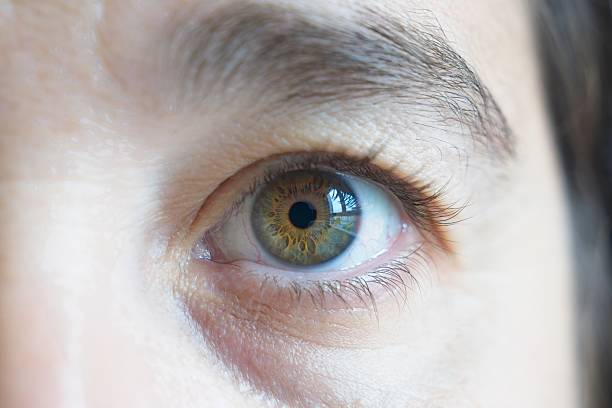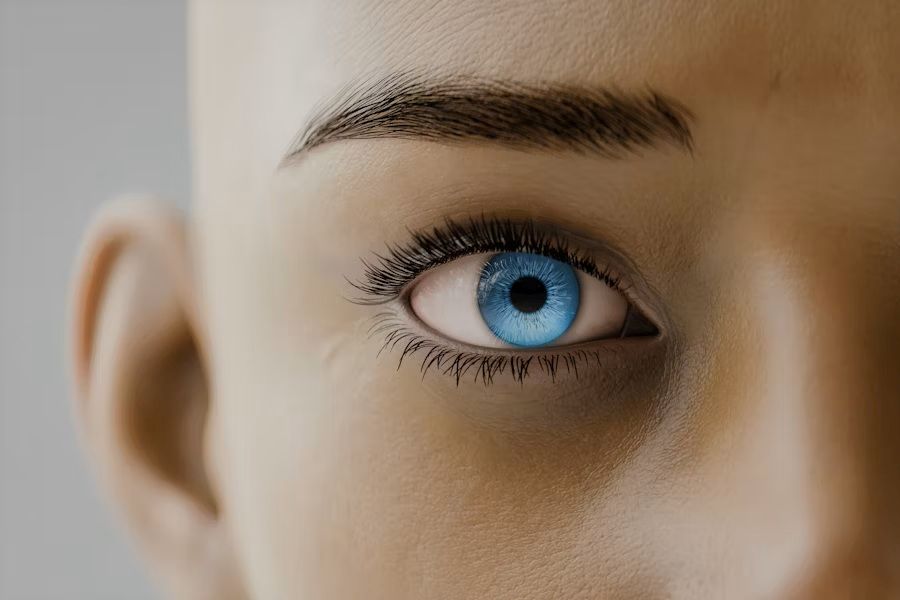Your Cart is Empty
Bionic Eyes: The Future of Vision or a Transhumanist Nightmare?

In the realm of medical technology, few developments capture the imagination quite like the concept of bionic eyes. Once relegated to the pages of science fiction, artificial vision systems are rapidly becoming a reality, promising to restore sight to the blind and potentially enhance human visual capabilities beyond their natural limits. But as we stand on the precipice of this visual revolution, we must grapple with a crucial question: Are bionic eyes the key to a brighter future, or are they opening the door to a transhumanist nightmare?
The Evolution of Bionic Eye Technology
The journey towards artificial vision has been long and complex, marked by numerous breakthroughs and setbacks. Early attempts at creating bionic eyes focused on developing devices that could provide basic visual information to individuals with severe vision loss. These initial systems were often limited to helping users distinguish between light and dark or identify the edges of objects.
Recent advancements, however, have dramatically expanded the possibilities of artificial vision:
1. Retinal Implants: Devices like the Argus II use a camera mounted on glasses to send signals to an implant in the retina, stimulating remaining healthy cells to produce visual patterns.
2. Optic Nerve Implants: Researchers are developing systems that bypass the retina entirely, sending signals directly to the optic nerve.
3. Brain Implants: Some scientists are working on implants that interface directly with the visual cortex of the brain, potentially offering a solution for those with damage to both the eyes and optic nerves.
4. Stem Cell Therapy: While not strictly "bionic," advances in stem cell research offer the potential to regenerate damaged eye tissue, complementing or perhaps eventually replacing artificial systems.
Dr. Elena Rodriguez, a leading researcher in artificial vision, explains, "We're not just talking about restoring basic sight anymore. The goal is to create systems that can match or even exceed the capabilities of the human eye."
The Promise of Enhanced Vision
The potential benefits of bionic eye technology extend far beyond restoring sight to the blind. Researchers envision a future where artificial vision systems could offer enhanced capabilities such as:
1. Night Vision: Allowing users to see clearly in low-light conditions.
2. Zoom Functionality: The ability to focus on distant objects with unprecedented clarity.
3. Expanded Color Spectrum: Perceiving colors beyond the visible spectrum, such as infrared or ultraviolet.
4. Data Overlay: Integrating visual information with digital data, similar to augmented reality displays.
5. Recording and Playback: The capacity to record visual experiences and replay them later.
These enhancements could have profound implications across various fields, from medicine and law enforcement to art and entertainment.
The Ethical Quandary
As exciting as these possibilities are, they also raise significant ethical concerns. The development of bionic eyes that surpass natural human capabilities ventures into the realm of human enhancement, a core concept of transhumanism. This philosophical movement advocates for the use of technology to augment human physical and cognitive abilities, potentially altering the very nature of what it means to be human.
Key ethical considerations include:
1. Inequality and Access: Will advanced bionic eyes create a divide between those who can afford enhanced vision and those who cannot?
2. Identity and Authenticity: How might superhuman visual abilities affect our sense of self and our relationships with others?
3. Privacy Concerns: Could bionic eyes with recording capabilities infringe on personal privacy rights?
4. Security Risks: What are the implications of hackable visual systems directly connected to our brains?
5. Cognitive Overload: Could an influx of enhanced visual information overwhelm the human brain?
6. Medical Necessity vs. Elective Enhancement: Where do we draw the line between restoring normal function and enhancing beyond natural limits?
Dr. Sarah Thompson, a bioethicist, warns, "We're entering uncharted territory. The ability to enhance human vision beyond its natural capabilities raises profound questions about the future of our species and the potential creation of a 'post-human' society."
The Current Landscape of Eye Technology
While the debate over advanced bionic eyes continues, it's worth noting that our relationship with eye technology is already evolving in intriguing ways. The proliferation of high-quality smartphone cameras has given rise to a fascinating trend in eye photography. Many people are now capturing detailed images of their own irises, creating a new form of personal art and exploration.
This trend, often referred to as "eye selfies" or "iris portraits," has gained popularity on social media platforms. Users share close-up shots of their eyes, revealing the intricate patterns and colors of their irises. While not directly related to bionic eye technology, this phenomenon underscores our fascination with the human eye and our eagerness to engage with visual technology in new ways.
John Davies, a digital artist specializing in iris photography, notes, "People are amazed when they see the details of their own eyes up close. It's like discovering a hidden world, and it's all possible with the camera in your pocket."
The Road Ahead: Balancing Progress and Ethical Concerns
As we navigate the complex landscape of bionic eye development, striking a balance between technological progress and ethical considerations will be crucial. Several key areas require attention:
1. Regulatory Frameworks: Developing comprehensive guidelines for the development, testing, and implementation of bionic eye technology.
2. Ethical Oversight: Establishing ethics committees to evaluate the implications of each new advancement in artificial vision.
3. Public Discourse: Engaging the wider public in discussions about the future of human vision and its societal impact.
4. Accessibility Initiatives: Ensuring that restorative technologies are available to those who need them, regardless of economic status.
5. Long-term Studies: Conducting extensive research on the psychological and physiological effects of enhanced vision.
6. Security Protocols: Developing robust security measures to protect bionic eye systems from unauthorized access or manipulation.
7. Education and Awareness: Providing clear, factual information about bionic eye technology to combat misinformation and alleviate public concerns.
Dr. Michael Lee, a pioneer in ophthalmic technology, emphasizes the need for a measured approach: "We have an opportunity to dramatically improve lives through artificial vision. But we must proceed with caution, always keeping the broader implications of our work in mind."
The Philosophical Dimension
The development of bionic eyes that surpass natural human capabilities forces us to confront fundamental questions about the nature of humanity and our relationship with technology:
1. What defines human perception, and how might enhanced vision alter our understanding of reality?
2. Is there an inherent value in our natural limitations, or should we strive to transcend them whenever possible?
3. How might superhuman visual abilities affect our empathy and connection with those who lack such enhancements?
4. Could enhanced vision lead to new forms of art, communication, or even consciousness?
These philosophical quandaries extend beyond academia, potentially reshaping our cultural, social, and legal frameworks.
Conclusion: Visioning a Path Forward
The development of bionic eyes stands as a testament to human ingenuity and our relentless pursuit of overcoming natural limitations. From restoring sight to the blind to potentially granting superhuman visual abilities, this technology holds immense promise. Yet, as we venture into this new frontier, we must remain vigilant about the ethical implications and potential societal impacts.
The key to navigating this complex landscape lies in fostering open dialogue, rigorous scientific inquiry, and thoughtful ethical consideration. We must strive to harness the benefits of bionic eye technology while mitigating its risks and ensuring equitable access.
As we continue to push the boundaries of what's possible in artificial vision, we're not just developing new technologies – we're actively shaping the future of human perception and, by extension, human experience itself. Whether this leads to a visionary utopia or a transhumanist dilemma remains to be seen. What's certain is that the way we approach these advancements will play a crucial role in determining the kind of future we create.
In the end, the story of bionic eyes is not just about restoring or enhancing vision. It's a narrative about human potential, ethical responsibility, and the ever-evolving relationship between humanity and technology. As we peer into this future, we must do so with eyes wide open, cognizant of both the brilliant possibilities and the shadowy uncertainties that lie ahead.
Leave a comment
Comments will be approved before showing up.




